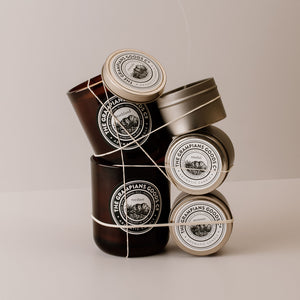
Why Does My Recycled Wool Blanket Have A Funny Smell? And How to Get Rid of It!
Wool: the OG natural fibre we all love. It’s warm, durable, and totally sustainable. But if you’ve ever unwrapped a brand-new wool product and been hit with that strong, earthy smell—don’t freak out! You’re not alone. While the scent can be a little “whoa!” at first, the good news is it’s totally natural and—spoiler alert—it doesn’t last forever. So, let’s break down why your wool might smell like a sheep’s best friend and how you can make it disappear in no time.
1. Why Does Wool Have That “Fresh Off the Farm” Odour?
Let’s get real: wool comes from sheep, and sheep are out there living their best lives, protected by lanolin, a natural oil that makes their fleece waterproof and warm. So, when you get a whiff of that *strong* scent, it’s usually the lanolin you’re smelling. It’s actually the secret sauce that makes wool so durable and cozy. High-quality wool products, in particular, hold onto more of that natural goodness—aka lanolin—which can sometimes mean a little extra aroma.
But wait, there’s more! Wool can also absorb scents from its surroundings during processing and storage. So if your blanket’s been chillin’ in packaging for a while, it might smell a bit stronger when you first unwrap it. Plus, if your wool is dyed using natural dyes (you know, the ones from plants, roots, and other good stuff), the smell can be even more intense because those organic dyes bring their own scent game.
2. The Good News? That Smell Is Temporary!
Here’s the deal: that woolly smell isn’t here to stay. Once you start using and airing out your new blanket, the scent will fade away, leaving you with just the cozy, warm vibes you’re after. Depending on where you live and how often you use your wool item, the smell can disappear within a few days to a couple of weeks. So, patience, friend—it’s worth it!
Fun fact: wool is hygroscopic, meaning it can absorb moisture from the air without feeling damp. This magical little trait helps wool breathe and release any lingering smells over time.
3. Air It Out, Lovely!
The easiest way to kick that smell to the curb? Fresh air! Just place your wool blanket in a breezy, well-ventilated spot—outside in the shade is perfect. The fresh air will work wonders to help the scent fade. But be careful: keep it out of direct sunlight because, trust us, you don’t want your wool to fade or weaken.
Pro Tip: Lay it flat or hang it up for even air exposure, and give it a little flip now and then. Let the breeze do its thing!
4. Give It a Gentle Wash
If airing out isn’t doing the trick, it’s time to treat your wool to a little spa day. A gentle wash with a wool-specific detergent and lukewarm water will do the job. Soak your woollen blanket for a bit, rinse with cold water, and gently press out the excess water. (No twisting or wringing, please—wool doesn’t like that!)
Once it’s freshened up, lay it flat on a towel to dry in a shady, breezy spot. This not only helps with the smell but gives your blanket a little refresh.
Industry Insight: The Woolmark Company knows what’s up—they recommend washing wool by hand or using a gentle machine cycle with a wool-safe detergent. Treat your wool right, and it’ll stay soft and fabulous.
5. Add a Little Scented Magic
Got a particularly stubborn woolly smell? No worries—we’ve got you covered. Pop a few drops of essential oil onto an old cloth, then toss it into the dryer with your blanket on the lowest heat setting for about 30 minutes. Boom—your blanket smells amazing and feels even cosier. Lavender, eucalyptus, or whatever scent you love works perfectly!
Conclusion: Embrace the Wool, Smell and All
Sure, the initial smell of wool can be a bit of a surprise, but let’s be real—it’s a small price to pay for all the fabulous benefits. Wool is *the* natural, sustainable fibre, and with a little love and patience, that smell will fade, leaving you with a cozy, warm blanket you’ll use forever.
Remember, that earthy scent is a sign of wool’s authenticity. It’s a reminder that this material came straight from nature, and with just a bit of airing out or a gentle wash, you can fully enjoy the warmth, comfort, and durability wool brings to your life—without any lingering surprises!








Leave a comment